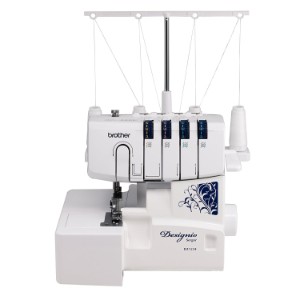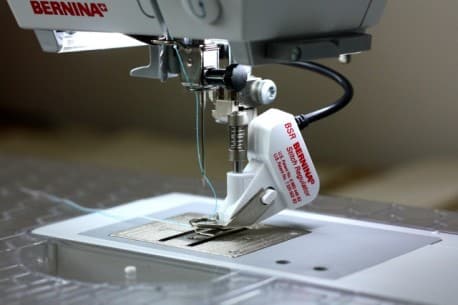Embroidery Business Secrets Revealed
Are you interested in starting an embroidery business? Hi, this is Joleen and I’ve found a great video for you that I want to share.
Are you interested in starting your own embroidery business, but feel overwhelmed by the amount of information out there?
In this video, you’ll learn from someone who has been in your shoes and made some mistakes along the way. They will share their top tips for choosing the right embroidery machine, finding the right digitizing software, using the proper stabilizer, avoiding perfectionism, and the importance of regular practice.
By following these tips, you can avoid some of the common mistakes and make your embroidery experience more enjoyable and successful. So, grab a notebook and get ready to learn!
Table of Contents
- 1 Summary of “Things I Wish I Knew Before I Started Embroidering”
- 2 WHY I RECOMMEND THIS VIDEO:
- 3 Choosing the Right Embroidery Machine
- 4 Finding the Right Digitizing Software
- 5 Avoid Auto Digitizing
- 6 Using the Proper Stabilizer
- 7 Avoiding Perfectionism in the Embroidery Business
- 8 Importance of Regular Practice Embroidery Business
- 9 TAKEAWAY STARTING AN EMBROIDERY BUSINESS
Summary of “Things I Wish I Knew Before I Started Embroidering”
The goal of this video is to help beginners avoid mistakes and have a better embroidery experience. The speaker shares six important tips:
- Choosing the right embroidery machine: It’s easy to get overwhelmed when deciding which machine to buy. Whether you have a tight budget or all the money in the world, it’s important to consider your needs and the scale of your business. Researching and finding the right machine is crucial.
- Finding the right digitizing software: The speaker recommends researching and choosing the right digitizing software. They started with PE 10 Brother and later tried more advanced software like Chroma and Wilcom. It’s important to find a software that works well for you, as it takes time to learn and master.
- Avoid relying on auto digitize: The speaker made the mistake of relying too much on auto digitize and YouTube tutorials. They found that manually digitizing designs yielded better results and gave them more control over the final product. Taking the time to learn how to digitize is important, even though it can be frustrating at first.
- Using proper stabilizer: Using the right stabilizer for different fabrics is crucial to avoid ruining garments. Tear away stabilizer may be convenient, but it may not provide enough stability for certain fabrics. Researching and using the appropriate stabilizer for each fabric is essential for better embroidery results.
- Don’t be a perfectionist: Overthinking and striving for perfection can hinder progress and sales. It’s important to constantly improve, but not get caught up in trying to make everything perfect right away. Instead, focus on constantly improving and learning from mistakes.
- Practice regularly: Embroidery requires practice to improve skills and achieve better results. Even if you have limited time, practicing a little every day or every other day will yield better long-term results than attempting complex designs and getting discouraged by mistakes.
WHY I RECOMMEND THIS VIDEO:
- Elevate your style with exquisite, handcrafted embroidery that sets you apart from the crowd!
- Discover the magic of turning ordinary fabrics into stunning works of art with our intricate embroidery designs.
- Unlock a world of creativity as you explore endless possibilities and create personalized gifts for your loved ones.
- Experience the satisfaction of transforming plain garments into one-of-a-kind masterpieces that reflect your unique personality.
- Immerse yourself in the joy of embroidery and unleash your inner artist as you bring beautiful patterns to life with every stitch.

Key Takeaways Embroidery Business Secrets
- Choosing the right embroidery machine and digitizing software is crucial for success.
- Avoid auto digitizing and use the proper stabilizer for the fabric you are working with.
- Regular practice and avoiding perfectionism are key to improving your skills.
Some of the secrets to running a successful embroidery business include having a clear business plan, investing in high-quality equipment and materials, building a strong online presence, and providing excellent customer service.
To make your embroidery business stand out from the competition, you can offer unique designs and customization options, provide fast turnaround times, offer competitive pricing, and focus on building strong relationships with your customers.
Some common mistakes to avoid when starting an embroidery business include underestimating the costs involved, not investing in high-quality equipment and materials, failing to develop a clear business plan, and not properly marketing your business.
To grow your embroidery business over time, you can expand your product offerings, invest in new equipment and technology, offer promotional discounts and deals, and focus on building a loyal customer base through excellent service and personalized attention.
Some tips for managing the day-to-day operations of an embroidery business include setting clear goals and priorities, delegating tasks to employees or contractors as needed, keeping detailed records of expenses and income, and staying up-to-date on industry trends and best practices.
Choosing the Right Embroidery Machine
Embroidery machines come in all shapes and sizes, and choosing the right one for your needs can be a daunting task. In this section, we will explore some important factors to consider when selecting an embroidery machine.
Scaling Your Business
Before you begin your search for an embroidery machine, it’s important to consider how you plan to scale your business. If you’re just starting out, a smaller, more affordable machine may be a good option.
However, if you plan on expanding your business in the future, it may be worth investing in a larger, more advanced machine that can handle bigger projects.
Considerations for Budget
When it comes to embroidery machines, there is a wide range of prices to choose from. It’s important to consider your budget when selecting a machine, but also keep in mind that cheaper machines may not have all the features you need.
Do your research and make sure you’re getting the best value for your money.
Importance of Hoop Size
One of the most important factors to consider when selecting an embroidery machine is the hoop size. Hoop size determines the maximum size of the designs you can create.
If you plan on creating larger designs, make sure to select a machine with a larger hoop size. Keep in mind that a larger hoop size may also mean a larger machine, so make sure you have enough space in your workspace.
When choosing an embroidery machine, it’s important to consider how you plan to scale your business, your budget, and the importance of hoop size. Do your research and select a machine that meets your needs and budget, while also allowing you to create the designs you envision.
Finding the Right Digitizing Software
When it comes to digitizing, finding the right software is crucial to your embroidery success. In this section, we will cover the learning curve, software options, and the benefits of sticking to one software.
Learning Curve
Learning how to digitize can be time-consuming and frustrating, but it is an essential skill if you want to create custom embroidery designs. Digitizing software takes time to learn and get used to, so finding the right one that works for you is crucial.
While it may be tempting to rely on auto-digitizing, taking the time to learn how to digitize manually will yield better results in the long run.
Software Options
There are many digitizing software options on the market, so it’s important to do your research before deciding which one to use. Some popular options include Brother PE Design, Wilcom, Chroma from Rakoma, In Brilliance, and Malco.
Each software has its own strengths and weaknesses, so it’s important to find one that fits your needs and budget.
Benefits of Sticking to One Software
Once you have found a digitizing software that works for you, it’s best to stick with it. Learning how to use one software thoroughly will save you time and money in the long run.
You will become more efficient and proficient in your digitizing process, allowing you to create better quality designs. Additionally, if you decide to outsource your digitizing work, sticking with one software will make it easier to communicate your needs to the digitizer.
Finding the right digitizing software is crucial to your embroidery success. Take the time to research and learn the software that works best for you, and stick with it to become more efficient and proficient in your digitizing process.
Avoid Auto Digitizing
When starting embroidery, it can be tempting to rely on auto-digitizing to create designs quickly. However, this can lead to poor-quality designs and limit your creativity. Here are a few reasons why you should avoid auto-digitizing and opt for manual digitizing instead.
Importance of Manual Digitizing
Manual digitizing allows you to have complete control over the design, resulting in higher quality and more intricate designs. It may take more time to learn and perfect, but the end result is worth it.
By manually digitizing, you can adjust stitch density, stitch direction, and other details to ensure the design is perfect.
Quality Control
Auto digitizing can result in designs that are not up to par with your standards. With manual digitizing, you can ensure that your designs are of high quality and meet your expectations.
This is especially important if you are creating custom embroidery for clients, as poor quality designs can damage your reputation.
Learning a Valuable Skill Set
Learning how to manually digitize is a valuable skill set that can benefit you in the long run. It allows you to create custom designs and make adjustments as needed, rather than relying on pre-made designs.
Additionally, if you plan to start an embroidery business, knowing how to manually digitize can save you money in the long run by not having to hire a digitizer.
While auto digitizing may seem like an easy and quick solution, it is not the best option for creating high-quality designs. By taking the time to manually digitize, you can ensure that your designs are of the highest quality and learn a valuable skill set that can benefit you in the long run.
Using the Proper Stabilizer
When it comes to embroidery, using the right stabilizer is crucial to achieve the desired results. In this section, we will discuss the importance of understanding different types of stabilizers, matching stabilizers with fabric, and common mistakes to avoid.
Understanding Different Types of Stabilizers
There are different types of stabilizers available in the market, and each one serves a specific purpose. Here are some of the most common types of stabilizers:
-
Cutaway: This type of stabilizer is ideal for knits, stretchy fabrics, and loosely woven fabrics. Cutaway stabilizers provide excellent support to the fabric during the embroidery process.
-
Tearaway: Tearaway stabilizers are easy to remove and work well with stable fabrics like cotton. However, they may not provide enough support for stretchy or loosely woven fabrics.
-
Washaway: Washaway stabilizers dissolve in water, making them perfect for delicate fabrics like lace and sheer fabrics.
-
Heat-away: Heat-away stabilizers are removed by applying heat. They are ideal for fabrics that cannot be washed, like leather and vinyl.
Matching Stabilizer with Fabric
Choosing the right stabilizer for your fabric is essential to achieve high-quality embroidery. Here are some tips to help you match stabilizer with fabric:
-
Consider the weight and stretch of the fabric. The heavier the fabric, the heavier the stabilizer you will need.
-
Choose a stabilizer that is compatible with the type of thread you are using.
-
Use a stabilizer that is at least as wide as your hoop to provide adequate support.
Common Mistakes
Using the wrong stabilizer or not using it correctly can lead to embroidery mishaps. Here are some common mistakes to avoid:
-
Using tearaway stabilizer on stretchy fabrics like knits. This can cause the fabric to pucker or distort.
-
Using cutaway stabilizer on delicate fabrics like silk. This can cause the fabric to become stiff or heavy.
-
Using too much or too little stabilizer. Using too much stabilizer can cause the design to become stiff, while using too little can cause the fabric to pucker.
By understanding the different types of stabilizers, matching them with the fabric, and avoiding common mistakes, you can achieve professional-looking embroidery. Remember to always test your stabilizer and fabric combination before starting your embroidery project to ensure the best results.
Avoiding Perfectionism in the Embroidery Business
Embroidery can be a challenging field to get started in, but it’s important to remember to not be too hard on yourself. Perfectionism can be a hindrance to your progress, so it’s important to find a balance between quality and efficiency and to consider customer perception.
Balancing Quality and Efficiency
It’s natural to want to produce the best possible work, but it’s also important to be efficient in your embroidery process. This means finding ways to streamline your work without sacrificing quality.
One way to do this is to focus on improving one aspect of your work at a time, rather than trying to perfect everything at once. Practice a little every day, and you’ll see gradual improvement over time.
Another way to balance quality and efficiency is to avoid obsessing over minor imperfections. While it’s important to produce high-quality work, it’s also important to remember that small imperfections are often not noticeable to the customer.
Don’t let the pursuit of perfection hold you back from producing great work.
Customer Perception
It’s also important to consider customer perception when it comes to perfectionism. While you may see flaws in your work, the customer may not notice them at all. In fact, they may be thrilled with the finished product.
It’s important to remember that the customer’s opinion is what matters most, and if they are happy with the work, then it’s a job well done.
That being said, it’s still important to strive for high-quality work. The key is to find a balance between quality and efficiency, and to focus on the aspects of your work that will make the biggest impact on the customer.
By doing so, you can avoid the trap of perfectionism and produce great work that your customers will love.
Importance of Regular Practice Embroidery Business
Embroidery is an art that requires patience, skill, and practice. To become a successful embroiderer, you need to be consistent in your practice and continuously improve your skills.
In this section, we will discuss the importance of regular practice and how it can help you become a better embroiderer.
Consistency
Consistency is key when it comes to embroidery. It’s important to practice regularly, even if it’s just for a few minutes a day.
By practicing consistently, you can build muscle memory and improve your technique. This will help you to produce better quality embroidery and complete projects more efficiently.
To stay consistent in your practice, set a schedule and stick to it. Make embroidery a part of your daily routine, even if it’s just for a few minutes. This will help you to stay motivated and make progress towards your goals.
Incremental Improvement
Embroidery is a skill that takes time to master. It’s important to focus on incremental improvement, rather than trying to be perfect right away. By setting small goals and working towards them, you can make steady progress and improve your skills over time.
To achieve incremental improvement, start by identifying areas where you need to improve. This could be anything from your stitching technique to your digitizing skills.
Once you’ve identified areas for improvement, set small goals and work towards them. For example, if you want to improve your stitching technique, you could practice stitching straight lines for a few minutes each day.
By focusing on incremental improvement, you can build your skills and become a better embroiderer over time. Remember to be patient and give yourself time to learn and grow.
With regular practice and incremental improvement, you can achieve your embroidery goals and create beautiful, high-quality embroidery projects.
TAKEAWAY STARTING AN EMBROIDERY BUSINESS
In conclusion, starting out in the world of embroidery can be overwhelming, but with the right mindset and approach, it can be a fun and rewarding experience. When choosing a machine, it’s important to consider your budget and the scale of your business.
Researching and finding the right digitizing software is also crucial, as it takes time to learn and get used to. Avoid auto digitizing and take the time to learn how to digitize manually, as it yields better results and saves money in the long run.
Overall, embroidery can be a challenging but rewarding business. It takes time, patience, and practice to get good at it, but with the right mindset and approach, you can achieve great results.
Remember to be kind to yourself and enjoy the process, and you’ll be sure to succeed in your embroidery endeavors.
Using the proper stabilizer for the fabric you’re working with is also important, as it can save you from ruining garments. Remember to not be a perfectionist and constantly work on improving instead of trying to be perfect right away.
Practice makes perfect, so take the time to practice embroidery and digitizing, even if it’s just a little bit every day.








Thank you
Good information.
As beautiful as embroidery can be, I personally would not be interested in starting a business with it. I am too overwhelmed with my current business to consider anything more.
I have yet to venture much into the world of embroidery, but I see myself trying in the near future.
love your ideas
this is really neat
NICE INFO
Thanks for all the info
Thank you for these tips.
Thanks for the information
So many time saving tips in one place, thank you yet again!!
Ha! I think I have made every mistake mentioned. This is great advice!
thank you for sharing
Great tips!
Thank you for these tips. Embroidery can be very beautiful but does not work well at all with stretch fabrics.
Thank you for sharing with us all. I would love to start my own business.
i miss my embroidery machine–wish it had not kicked the bucket
Thanks for sharing these tips.